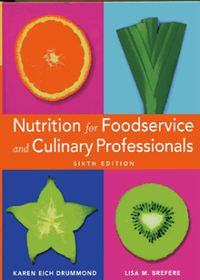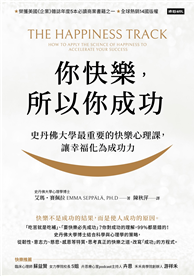Preface.
PART ONE. FUNDAMENTALS OF NUTRITION AND FOODS.
Chapter 1. Introduction to Nutrition.
Factors Influencing Food Selection.
Flavor.
Other Aspects of Food.
Demographics.
Culture and Religion.
Health.
Social and Emotional Influences.
Food Industry and the Media.
Environmental Concerns.
Basic Nutrition Concepts.
Nutrition.
Kilocalories.
Nutrients.
Nutrient Density.
Characteristics of a Nutritious Diet.
Nutrient Recommendations: Dietary Reference Intakes.
What Happens When You Eat.
Digestion, Absorption, and Metabolism.
Gastrointestinal Tract.
Food Facts: Food Basics.
Hot Topic: Organic Foods.
Chapter 2. Using Dietary Recommendations, Food Guides, and Food Labels to Plan Menus.
Dietary Recommendations and Food Guides.
Dietary Guidelines for Americans (2005).
USDA Food Guide.
Food Labels.
Nutrition Facts.
Nutrient Claims.
Health Claims.
Portion Size Comparisons.
Food Facts: Nutrient Analysis of Recipes.
Hot Topic: Quack! Quack!.
Chapter 3. Carbohydrates.
Functions of Carbohydrates.
Simple Carbohydrates (Simple Sugars).
Monosaccharides.
Disaccharides.
Added Sugars.
Health Issues.
Complex Carbohydrates.
Starches.
Health Effects of Starches.
Fibers.
Health Effects of Fibers.
Whole Grains.
Digestion, Absorption, and Metabolism of Carbohydrates.
Dietary Recommendations for Carbohydrates.
Ingredient Focus: High Fiber Grains and Legumes.
Grains.
Nutrition.
Chef's Tips.
Legumes.
Nutrition.
Chef's Tips.
Food Facts: The Facts About Low-Carb Foods.
Hot Topic: Artificial and Reduced-Kcalorie Sweeteners.
Chapter 4. Lipids: Fats and Oils.
Functions of Lipids.
Triglycerides.
Triglycerides in Food.
Trans Fats.
Essential Fatty Acids.
Rancidity.
Cholesterol.
Lecithin.
Digestion, Absorption, and Metabolism.
Lipids and Health.
Heart Disease.
Cancer.
Dietary Recommendations.
Ingredient Focus: Dairy.
Food Facts: Oils and Margarines.
Hot Topic: Fat Substitutes.
Chapter 5. Protein.
Structure of Protein.
Functions of Protein.
Denaturation.
Digestion, Absorption, and Metabolism.
Protein in Food.
Health Effects of Protein.
Dietary Recommendations for Protein.
Ingredient Focus: High Protein Meat, Poultry, and Fish.
Nutrition.
Chef's Tips.
Food Facts: Soy Foods.
Hot Topic: Irradiation.
Chapter 6. Vitamins.
Characteristics of Vitamins.
Fat-Soluble Vitamins.
Vitamin A.
Vitamin D.
Vitamin E.
Vitamin K.
Water-Soluble Vitamins.
Vitamin C.
Thiamin, Riboflavin, and Niacin.
Vitamin B6.
Folate.
Vitamin B12.
Pantothenic Acid and Biotin.
Choline and Vitaminlike Substances.
Ingredient Focus: Fruits and Vegetables.
Nutrition.
Chef's Tips.
Food Facts: How to Retain Vitamins and Minerals From Purchasing to Serving .
Hot Topic: Functional Foods and Phytochemicals.
Chapter 7. Water and Minerals.
Water.
Major Minerals.
Calcium and Phosphorus.
Magnesium.
Sodium.
Potassium.
Chloride.
Other Major Minerals.
Trace Minerals.
Iron.
Zinc.
Iodine.
Selenium.
Fluoride.
Chromium.
Copper.
Other Trace Minerals.
Osteoporosis.
Facts and Figures.
What Is Bone?.
Risk Factors.
Prevention.
Detection.
Treatment.
Ingredient Focus: Nuts and Seeds.
Chef's Tips.
Food Facts: Bottled Waters.
Hot Topic: Dietary Supplements.
PART TWO. DEVELOPING AND MARKETING HEALTHY RECIPES AND MENUS.
Chapter 8. Foundations of Balanced Cooking.
Flavor.
Herbs and Spices.
Juices.
Vinegars and Oils.
Stock.
Rubs and Marinades.
Aromatic Vegetables.
Sauce Alternatives: Vegetable Pur?es, Coulis, Salsas, Relishes, Chutneys, Compotes, and Mojos.
Wine and Spirits.
Extracts and Oils.
Cooking Methods and Techniques for a Balanced Eating Style.
Dry-Heat Cooking Methods.
Chef's Tips.
Moist-Heat Cooking Methods.
Chef's Tips.
Chapter 9. Balanced Menus and Recipes.
Introduction to Balanced Menus.
Recipe Modification.
Breakfast.
Chef's Tips.
Appetizers.
Chef's Tips.
Soups.
Chef's Tips.
Salads and Dressings.
Chef's Tips.
Entr?es.
Chef's Tips.
Side Dishes.
Chef's Tips.
Desserts.
Chef's Tips.
Morning and Afternoon Breaks.
Morning Breaks.
Afternoon Breaks.
Presentation.
Basic Principles.
How to Make Garnishes.
Recipes.
Chapter 10. Marketing to Health-Conscious Guests.
Gauging Guests' Needs and Wants.
Responding to Special Guest Requests.
Low Carbohydrate Diet.
South Beach Diet.
High Fiber.
Low in Added Sugars .
Low Fat, Saturated Fat, and Cholesterol.
Low Sodium (Low Salt).
Vegetarian.
Low Lactose.
Gluten-Free.
Developing and Implementing Balanced Menu Options.
Promotion.
Staff Training.
Program Evaluation.
Restaurants and Nutrition Labeling Laws.
Part Two Nutrition's Relationship to Health and Life Span.
Chapter 11. Nutrition and Health.
Nutrition and Cardiovascular Disease.
Coronary Heart Disease.
Stroke.
High Blood Pressure.
Menu Planning for Cardiovascular Diseases.
Nutrition and Cancer.
Menu Planning to Lower Cancer Risk.
Nutrition and Diabetes Mellitus.
Vegetarian Eating.
Nutritional Adequacy for Vegetarian Diets.
Vegetarian Food Guide.
Menu-Planning Guidelines for Vegetarians.
Food Facts: Caffeine.
Hot Topic: Biotechnology.
Chapter 12. Weight Management and Exercise.
"How Much Should I Weigh?".
Health Implications of Obesity.
Theories of Obesity.
Treatment of Obesity.
Eating Plan and Nutrition Education.
Exercise.
Behavior and Attitude Modification.
Social Support.
Maintenance Support.
Drugs.
Surgery.
Menu-Planning for Weight Loss and Maintenance.
The Problem of Underweight.
Nutrition for the Athlete.
Food Facts: Sports Drinks.
Hot Topic: Fad Diets.
Chapter 13. Nutrition Over the Life Cycle.
Pregnancy.
Nutrition During Pregnancy.
Diet-Related Concerns During Pregnancy.
Menu Planning During Pregnancy.
Nutrition and Menu Planning During Lactation.
Infancy: The First Year of Life.
Nutrition During Infancy.
Feeding the Infant.
Childhood.
Nutrition During Childhood.
Menu Planning for Children.
Adolescence.
Nutrition During Adolescence.
Menu Planning for Adolescents.
Eating Disorders.
Anorexia Nervosa.
Bulimia Nervosa.
Binge Eating Disorder.
Female Athlete Triad.
Treatment.
Older Adults.
Factors Affecting Nutrition Status.
Nutrition for Older Adults.
Menu Planning for Older Adults.
Food Facts: Creative Pur?ed Foods.
Hot Topic: Food Allergies.
Appendix A. Nutritive











